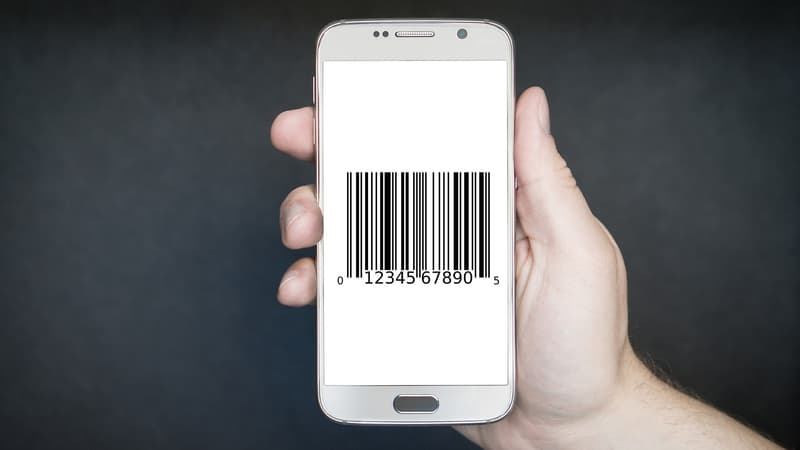Happy birthday to the barcode… The famous commercial food identification system, one of the main contributors to the globalization of commerce, celebrates its 50th anniversary in 2023, before being gradually replaced by another identification system, the QR code , richer in information. “Beep!”: For customers like hosts and pay hostesses, the barcode is now a sound. Every day around the world, these vertical lines of various thicknesses are scanned 6 billion times. 70,000 products passing through the boxes every second.
Another dizzying stat: a mid-size French brand like Système U (4th largest distributor in France with 11.6% market share and close to 1,700 stores) reported 523 million cases in 2022. Inventory management, transportation , traceability… The barcode, a true “product identity document”, “also allows store professionals to have access to other functionalities”, explains Laurence Vallana, director in France of SES-Imagotag, to AFP. , a company specializing in electronic labeling.
If the barcode was patented in 1952 by two Americans, Norman Joseph Woodland and Bernard Silver, it was not really perfected and commercialized until 1971 under the impetus of the American engineer George Laurer. And on April 3, 1973, the barcode became, after consultations between large manufacturers and distributors, the system to identify the consumer products that were to be exchanged in the following decades. Then it will be known as EAN-13 for “European Article Number” and 13 for the number of digits it has.
pack of gum
The first item to be scanned using its barcode, on June 26, 1974 in Ohio, was a packet of fruit gum, now on display at the National Museum of American History in Washington. It is today the organization Global Standard 1 (GS1) – “neutral and non-profit”, and strong of two million member companies, including 53,000 in France – which is responsible for the worldwide standardization of product identification.
The organization issues for every product from every company that requests it, from Coca-Cola to a cheese producer, a unique identification code, the “global trade item number,” which will then be translated into a barcode. Each company must pay a contribution proportional to its turnover, from 98 euros to 4,400 euros per year.
And a small revolution is brewing, explained to AFP Renaud de Barbuat and Didier Veloso, respectively CEO of GS1 World and president of GS1 France: in 2027, the barcode “will retire” and “make room for the new standard developed by organization” in the form of a QR code.
If the barcode has reminded certain artists, critics of overconsumption or globalization, of prison bars, the appearance of the QR Code can remind us of the game of go: it is this game of Chinese origin that, with its combinations of white and black dots arranged in a square, inspired its Japanese creator in 1994, Masahiro Hara. QR code stands for Quick Response Code and its advantage over barcodes is that it can incorporate much more information, for example the composition of the product, essential for recycling.
“Create new uses”
Its assets: “capture more product information, share an infinite number of digital contents”, or “create new uses accessible to all, in particular to consumers”, summarizes GS1. Some brands already add these codes to their products, which allows customers to know more about their manufacture or their characteristics. This gesture was largely democratized at the time of the Covid-19 epidemic.
Like the barcode before it, the QR code quickly drifted away from its cheap use, used by artists, such as on the cover of French rapper Vald’s “V” album, or recently unfurled as a banner in a stadium gallery by the ultra supporters of Paris Saint-Germain… Applied to consumer products, GS1 believes that the QR Code will be “a great tool to develop the circular economy”, in particular recycling, reuse, reuse.
Those nostalgic for barcodes can rest easy: “the 13 small digits to identify a product will remain,” says GS1. The transition will be smooth.
Source: BFM TV


